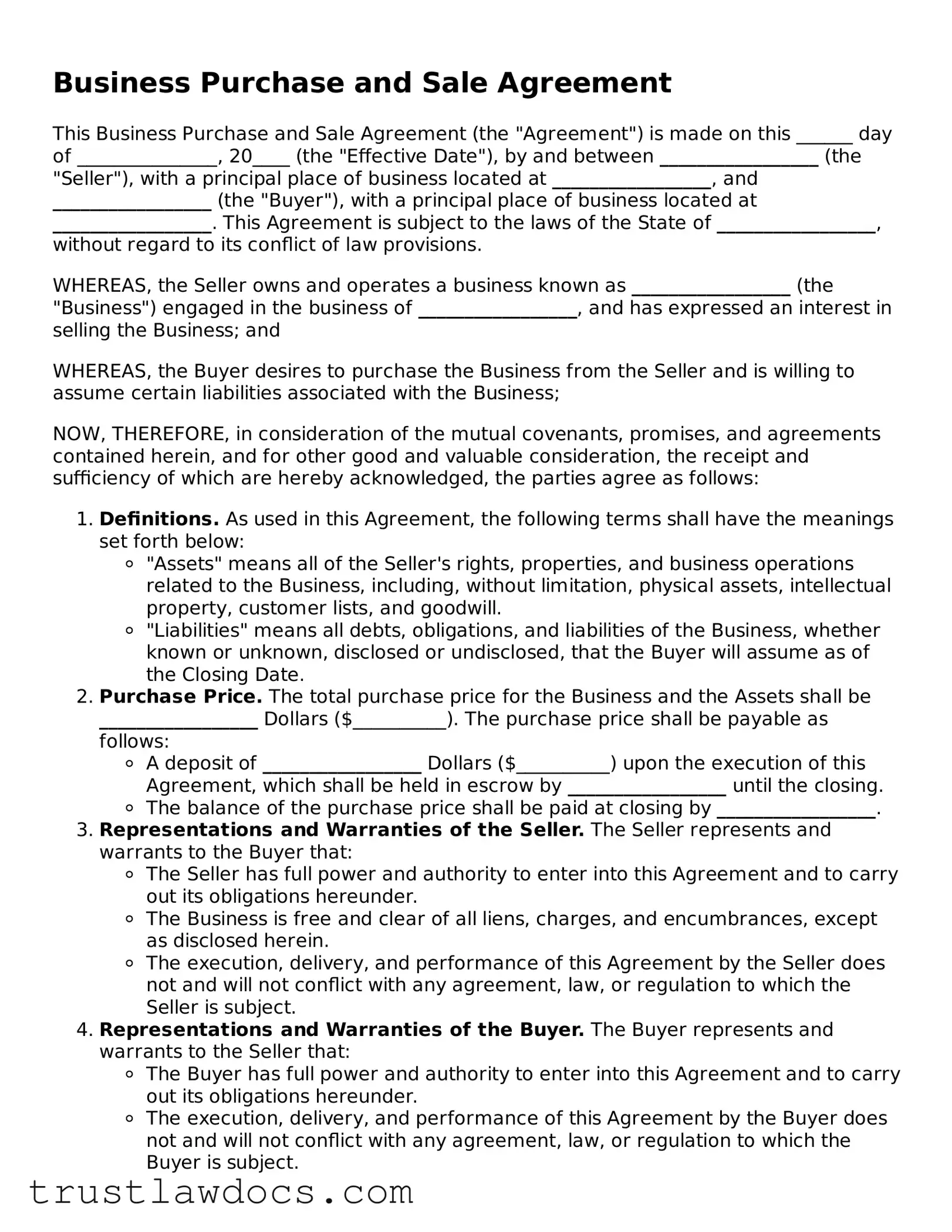What is a Business Purchase and Sale Agreement?
A Business Purchase and Sale Agreement is a legally binding document between a seller and a buyer where the terms and conditions of the sale and purchase of a business are detailed. It outlines what is being sold, including assets and liabilities, the purchase price, payment plans if any, closing date, and any conditions that must be met before the deal is closed.
Why do I need a Business Purchase and Sale Agreement?
This agreement serves as a formal record of the transaction and helps protect both parties by ensuring everyone is clear about the terms of the sale, including any responsibilities and obligations. It reduces the risk of misunderstandings and conflicts, providing a clear path for resolving disputes if they arise. Moreover, this agreement is often required by financial institutions and government entities during the transfer process.
What should be included in a Business Purchase and Sale Agreement?
A comprehensive Business Purchase and Sale Agreement should include the names of the buyer and seller, a detailed description of the business being sold, the sale price, payment terms, a list of all included and excluded assets, any assumed liabilities, conditions precedent to the sale, warranties and representations of both parties, and provisions for breach of contract. Additionally, it should specify the closing date and any adjustments to be made to the purchase price at closing.
How do I prepare a Business Purchase and Sale Agreement?
Preparing this agreement typically involves careful negotiation between the buyer and seller to reach mutually acceptable terms. It's advisable to consult with legal and financial professionals to ensure that all critical elements are accurately included and to receive guidance on complex issues like tax implications and regulatory compliance. Once these steps are completed, the final agreement can be drafted, reviewed by both parties, and then signed.
Is a lawyer required to create a Business Purchase and Sale Agreement?
While not strictly required, it's highly recommended to engage a lawyer when creating a Business Purchase and Sale Agreement. Legal professionals can provide invaluable advice on the implications of the terms, ensure the contract complies with state and federal laws, and help navigate any legal complexities related to the transaction. This can prevent costly mistakes and legal issues down the line.
Can I use a template for a Business Purchase and Sale Agreement?
Yes, templates can serve as a starting point, but it's important to customize the document to reflect the specific terms of your transaction and to ensure compliance with local laws and regulations. Given the significant legal and financial implications of buying or selling a business, it's advisable to work with legal counsel to tailor the agreement to your particular needs.
What happens after the Business Purchase and Sale Agreement is signed?
After the agreement is signed, both parties must fulfill any conditions specified in the contract before the closing date. This may involve securing financing, obtaining necessary approvals from governmental entities, or completing due diligence tasks. Once all conditions are met, the transaction can proceed to close, where the final exchange of assets and payment will occur.
How can disputes over a Business Purchase and Sale Agreement be resolved?
Disputes are typically resolved through negotiation or mediation as a first step, according to the dispute resolution provisions outlined in the agreement. If these methods fail, litigation may be necessary. It's crucial to have clear dispute resolution procedures in your agreement to guide this process. Consulting with legal counsel during disputes can also help find a resolution that's in the best interest of both parties.
Are there any post-sale responsibilities I should be aware of?
Yes, sellers may have certain obligations even after the sale is completed, such as assisting the buyer during a transition period, respecting non-compete clauses, or fulfilling any warranties or guarantees made in the agreement. Buyers should ensure that all necessary assets have been transferred and begin fulfilling any regulatory or operational requirements related to the newly acquired business. Both parties should review the agreement to fully understand their post-sale responsibilities.
